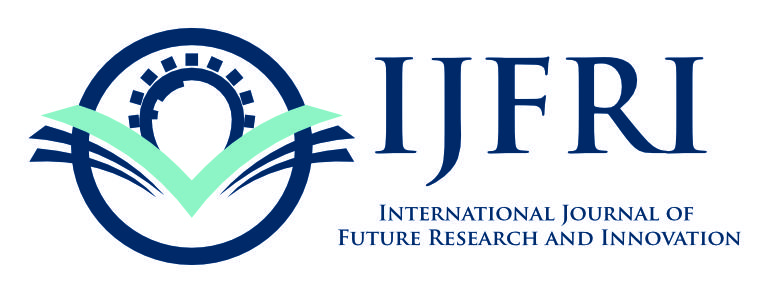Statistical Analysis of Magnesium and Aluminum Ion Concentrations in Antacid Samples from Rural Areas of Rajkot
Main Article Content
Abstract
Over-the-counter (OTC) antacids are commonly used for self-medication in rural areas of Rajkot to manage acidity and indigestion. However, the composition of these antacids, particularly their Magnesium (Mg²⁺) and Aluminum (Al³⁺) ion concentrations, plays a crucial role in their effectiveness and potential health implications. This study aims to analyze the elemental composition of selected antacid samples using Inductively Coupled Plasma Optical Emission Spectroscopy (ICP-OES) to quantify Mg²⁺ and Al³⁺ concentrations in mg/kg.
A descriptive statistical analysis was performed to assess the variation in Mg and Al content across different samples, including measures such as mean, standard deviation, range, and median. Additionally, a correlation analysis was conducted to examine the relationship between Mg and Al concentrations, providing insights into possible formulation trends in commercially available antacids. The study also presents graphical representations of the obtained data to enhance understanding of the elemental composition of antacids used in rural self-medication.
The findings from this study are valuable in evaluating the quality and consistency of OTC antacids and their potential effects on consumer health. Understanding the balance between Mg and Al in antacid formulations is essential, as excessive consumption of either component can lead to side effects such as diarrhea (Mg-based) or constipation (Al-based). This research contributes to the growing body of knowledge on self-medication practices and highlights the importance of monitoring elemental composition in OTC pharmaceutical products to ensure safe and effective use.
Article Details
Section

This work is licensed under a Creative Commons Attribution 4.0 International License.
All articles published in the International Journal of Future Research and Innovation (IJFRI) are licensed under a Creative Commons Attribution 4.0 International License (CC BY 4.0). Authors retain copyright and grant IJFRI the non-exclusive right to publish, distribute, and archive the work.
How to Cite
References
1. ICP-OES Methodology for Metal Analysis in Pharmaceuticals.
2. Sneddon, E. J., Hardaway, C. J., Sneddon, J., Boggavarapu, K., Tate, A. S., Tidwell, S. L., Gary, D. P., & Douvris, C. (2017). Determination of selected metals in rice and cereal by inductively coupled plasma-optical emission spectrometry (ICP-OES). Microchemical Journal, 134, 9–12.
3. .Sneddon, E. J., Hardaway, C. J., Sneddon, J., & Zhang, N. (2013). Continued studies on determination of selected metals in oysters from Southwest Louisiana by inductively coupled plasma-optical emission spectrometry. Microchemical Journal, 108, 239–240.
4. Khan, N., Jeong, I. S., Hwang, I. M., Kim, J. S., Choi, S. H., Nho, E. Y., Choi, J. Y., Kwak, B. M., Ahn, J. H., Yoon, T., & Kim, K. S. (2013). Method validation for simultaneous determination of chromium, molybdenum and selenium in infant formulas by ICP-OES and ICP-MS. Food Chemistry, 141(4), 3566–3570. https://doi.org/10.1016/j.foodchem.2013.06.034
5. .Krachler, M., Mohl, C., Emons, H., & Shotyk, W. (2002). Analytical procedures for the determination of selected trace elements in peat and plant samples by inductively coupled plasma mass spectrometry. Spectrochimica Acta - Part B Atomic Spectroscopy, 57(8), 1277–1289
6. Shetty, B., & Vishwanath, M. K. (2022). An expert opinion on antacids: A review of its pharmacological properties and therapeutic efficacy. F1000Research, 11, 1057. https://doi.org/10.12688/f1000research.124024.1
7. Sharma, N., Singh, V. K., Lee, Y., Kumar, S., Rai, P. K., Pathak, A. K., & Singh, V. K. (2020). Analysis of mineral elements in medicinal plant samples using libs and ICP-OES. Atomic Spectroscopy, 41(6), 234–241. Szymczycha-Madeja, A., Welna, M., Zabłocka-Malicka, M., Pohl, P., & Szczepaniak, W. (2021). Development and validation of an analytical method for determination of al, ca, cd, fe, mg and p in calcium-rich materials by icp oes. Molecules, 26
8. Benipal, G., Harris, A., Srirajayatsayai, C., Tate, A., Topalidis, V., Eswani, Z., Qureshi, M., Hardaway, C. J., Galiotos, J., & Douvris, C. (2017). Examination of Al, As, Cd, Cr, Cu, Fe, Mg, Mn, Ni, Pb, Sb, Se, V, and Zn in sediments collected around the downtown Houston, Texas area, using inductively coupled plasma-optical emission spectroscopy. Microchemical Journal, 130, 255–262. https://doi.org/10.1016/j.microc.2016.09.009
9. Benjamin U Ebeshi, Samuel J Bunu, Hilda F Kpun, & Cynthia O Ezebube. (2022). Analysis of gastrointestinal acid-neutralizing potency of some commercial antacid tablet formulations. GSC Biological and Pharmaceutical Sciences, 19(2), 008–013. https://doi.org/10.30574/gscbps.2022.19.2.0159
10. Bennadi, D. (2014). Self-medication: A current challenge. Journal of Basic and Clinical Pharmacy, 5(1), 19. https://doi.org/10.4103/0976-0105.128253
11. Dhawal, P. P., & Barve, S. S. (2019). Preliminary in-vitro evaluation of marketed formulations for antacid activity. International Journal of Basic & Clinical Pharmacology, 9(1), 57. https://doi.org/10.18203/2319-2003.ijbcp20195764
12. Dhawal, P. P., Barve, S. S., & Sen-Roy, D. (2021). Comparison of two marketed effervescent fast relief formulations for antacid activity-an in vitro study. International Journal of Basic & Clinical Pharmacology, 10(6), 633. https://doi.org/10.18203/2319-2003.ijbcp20212069
13. Divya, M., Bharatesh, S., Vasudeva, G., & Varalakshmi, C. (2016). Self-Medication Among Adults in Urban Udupi Taluk, Southern India. International Journal of Medicine and Public Health, 6(3), 126–129. https://doi.org/10.5530/ijmedph.2016.3.6

